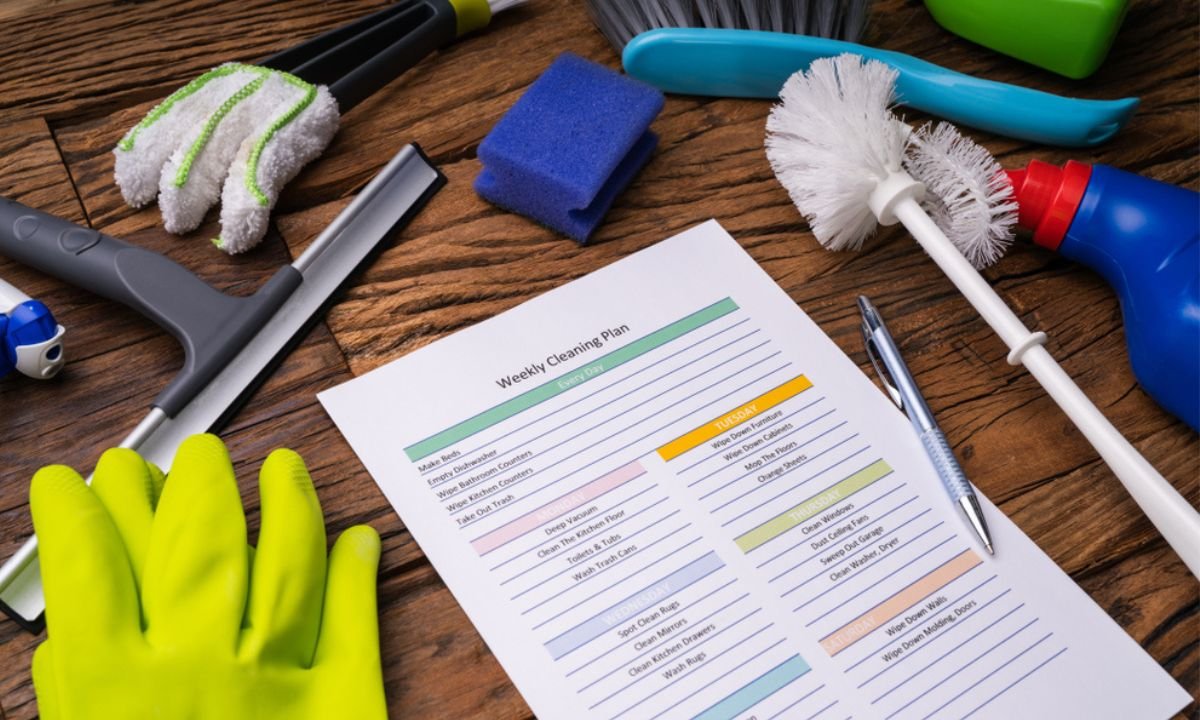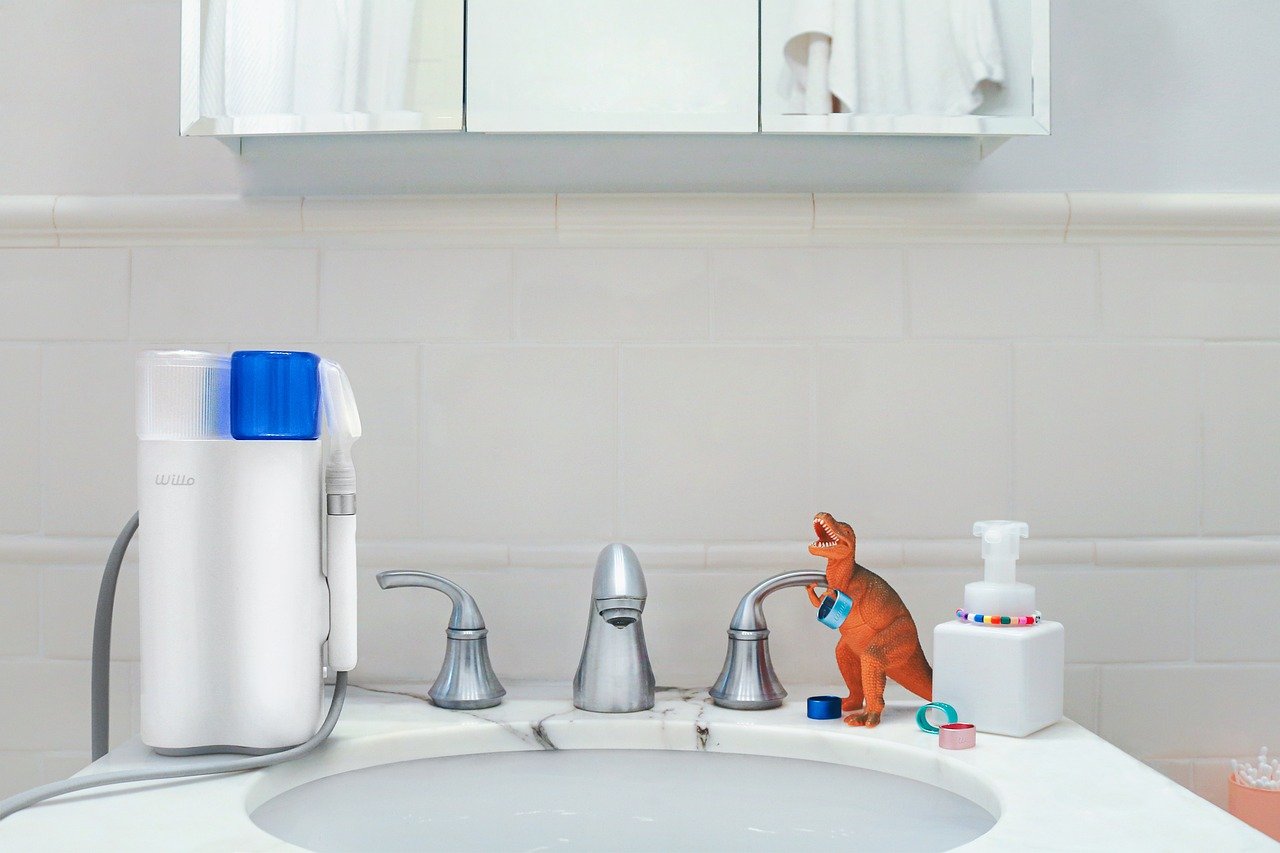Co-living spaces are becoming increasingly popular, especially for young professionals, students, and digital nomads. These shared living arrangements offer an affordable way to live in high-demand areas and create a sense of community. However, living with others requires a fair amount of cooperation, particularly when it comes to maintaining cleanliness and hygiene in shared spaces.
A cleaning schedule is a vital tool for maintaining a tidy and organized environment in a co-living space. By creating a fair and effective cleaning routine, everyone can contribute to keeping the living area pleasant, comfortable, and free from clutter.
In this article, we’ll discuss how to create an efficient cleaning schedule for a co-living space that ensures everyone does their part. This will help create a harmonious living environment and maintain high standards of cleanliness.
1. Assess the Space and Responsibilities
Before creating a cleaning schedule, it’s important to assess the co-living space and determine which areas need regular attention. Common spaces, such as the kitchen, bathroom, living room, and hallway, require frequent cleaning since these areas are shared by everyone. Bedrooms, on the other hand, are typically the responsibility of the individuals who occupy them, unless otherwise agreed upon.
Start by listing all the areas that need cleaning and break down the tasks. For instance, cleaning the kitchen could involve wiping countertops, washing dishes, sanitizing the stove, and mopping the floor. In the bathroom, you may need to clean the toilet, sink, shower, and mirror, as well as replace towels and toilet paper.
Assigning specific tasks to each person is an important part of creating a cleaning schedule. It ensures that everyone is contributing equally to the maintenance of shared spaces, preventing confusion or resentment among housemates.
For a thorough clean-up before moving in, consider hiring move-in cleaning services to ensure the space is hygienic and ready for use.
2. Determine Frequency of Cleaning
The next step in creating a cleaning schedule is determining how often each task should be completed. Some areas require daily cleaning, while others may only need attention weekly or monthly.
Daily Tasks:
- Kitchen: Wipe down counters, clean dishes, and take out the trash.
- Living Room: Tidying up clutter, wiping surfaces, and vacuuming if necessary.
- Bathroom: Quick wipe-down of surfaces, replenishing toilet paper, and sanitizing the toilet handle.
Weekly Tasks:
- Kitchen: Clean the refrigerator, sanitize the stove and microwave, deep clean the floor.
- Bathroom: Scrub the bathtub, deep clean the toilet and sink, mop the floor.
- Common Areas: Vacuum carpets and mop floors.
Monthly Tasks:
- Kitchen: Clean behind the fridge and oven, deep clean the pantry.
- Living Room: Clean windows and light fixtures.
- Bathroom: Clean the shower tiles and grout, wash shower curtains, and disinfect high-touch areas.
By breaking down the cleaning tasks by frequency, everyone will know exactly when and what to clean. It’s also a good idea to create a cleaning schedule that everyone can easily refer to, whether it’s a physical calendar posted on the wall or a shared digital document.
3. Assign Tasks Fairly
One of the most crucial aspects of creating a cleaning schedule for co-living spaces is ensuring that tasks are divided fairly. It’s easy for one person to end up doing most of the work, leading to frustration and tension between housemates.
Here are a few ways to ensure that tasks are fairly distributed:
- Rotation System: Rotate cleaning duties each week so that no one person is stuck with the same tasks every time. For example, one week you might be in charge of cleaning the bathroom, while the next week you take on the kitchen or living room.
- Skill-Based Assignments: Some people might enjoy certain tasks more than others or be better at them. For instance, if someone enjoys cooking, they might be happy to take on kitchen duties, while someone else might prefer vacuuming or doing the dishes.
- Team Cleaning: For larger cleaning tasks, consider working in pairs or small teams to make the work go faster and create a sense of camaraderie.
If you’re moving into a new co-living space, you might also consider setting up a move-in cleaning service to ensure the space is thoroughly cleaned before you settle in.
4. Use a Shared Calendar or App
In a busy co-living environment, it’s easy to forget when it’s time to clean or which tasks need attention. To keep everyone on track, using a shared calendar or cleaning app is highly recommended.
You can use a simple shared Google Calendar, a task management tool like Trello, or specialized apps like Tody or OurHome to keep everyone informed. These apps allow you to assign tasks to different housemates, set due dates, and send reminders to ensure that cleaning tasks are completed on time.
Having a visual reminder of the cleaning schedule in a common area is also a great way to keep everyone accountable. Post it on a whiteboard in the kitchen or living room so that everyone can easily see what tasks need to be done.
5. Encourage Communication and Cooperation
Communication is key to the success of any cleaning schedule. Make sure to discuss cleaning duties openly and encourage everyone to speak up if they feel that the schedule isn’t working for them. If someone is unable to complete their assigned tasks one week, it’s important to communicate this early so that someone else can step in and help.
Additionally, don’t be afraid to have periodic meetings to review the cleaning schedule and make adjustments as needed. A cleaning schedule should be flexible enough to accommodate everyone’s needs and preferences.
By fostering an atmosphere of open communication, you can prevent misunderstandings and ensure that everyone’s expectations are aligned when it comes to cleaning duties.
6. Hire Professional Cleaners for Deep Cleaning
While a cleaning schedule is essential for day-to-day upkeep, there may be times when you want to give your co-living space a deep clean. In these cases, hiring professional cleaning services can save time and effort.
Professional cleaners can help with tasks that require specialized equipment or expertise, such as carpet cleaning, window washing, or post-renovation cleaning. For example, if your space has recently been renovated, a post-renovation cleaning service can ensure that any dust or debris left behind is thoroughly cleaned, making your living space comfortable and ready to use.
7. Be Respectful of Shared Spaces
While everyone contributes to cleaning the space, it’s also essential to respect the shared areas. Keep personal items in your room or designated storage areas and avoid leaving them in communal spaces. This will help prevent clutter and make cleaning easier for everyone.
It’s also important to clean up after yourself in real-time—don’t leave dirty dishes in the sink, food crumbs on the table, or bathroom towels on the floor. A simple habit of tidying up immediately after using shared spaces will go a long way toward keeping things neat.
For information on living solutions for co-living spaces and how to enhance your experience in a shared living arrangement, check out Livhola’s various offerings.
8. Maintain a Positive Attitude
Lastly, it’s important to approach the cleaning schedule with a positive attitude. Cleaning can feel like a chore, but when everyone participates and contributes equally, it becomes much easier to handle. Turn cleaning into a fun activity by playing music, working as a team, or setting a time challenge to see who can complete their task the fastest.
A positive attitude and cooperation are key to maintaining a clean and harmonious living environment.
By following these tips, you can create a cleaning schedule that works for your co-living space and ensures everyone contributes fairly to maintaining a clean and comfortable home. Whether you need help with co-living space cleaning or organizing a routine cleaning plan, getting everyone on the same page is the first step toward a cleaner, more organized living environment.










